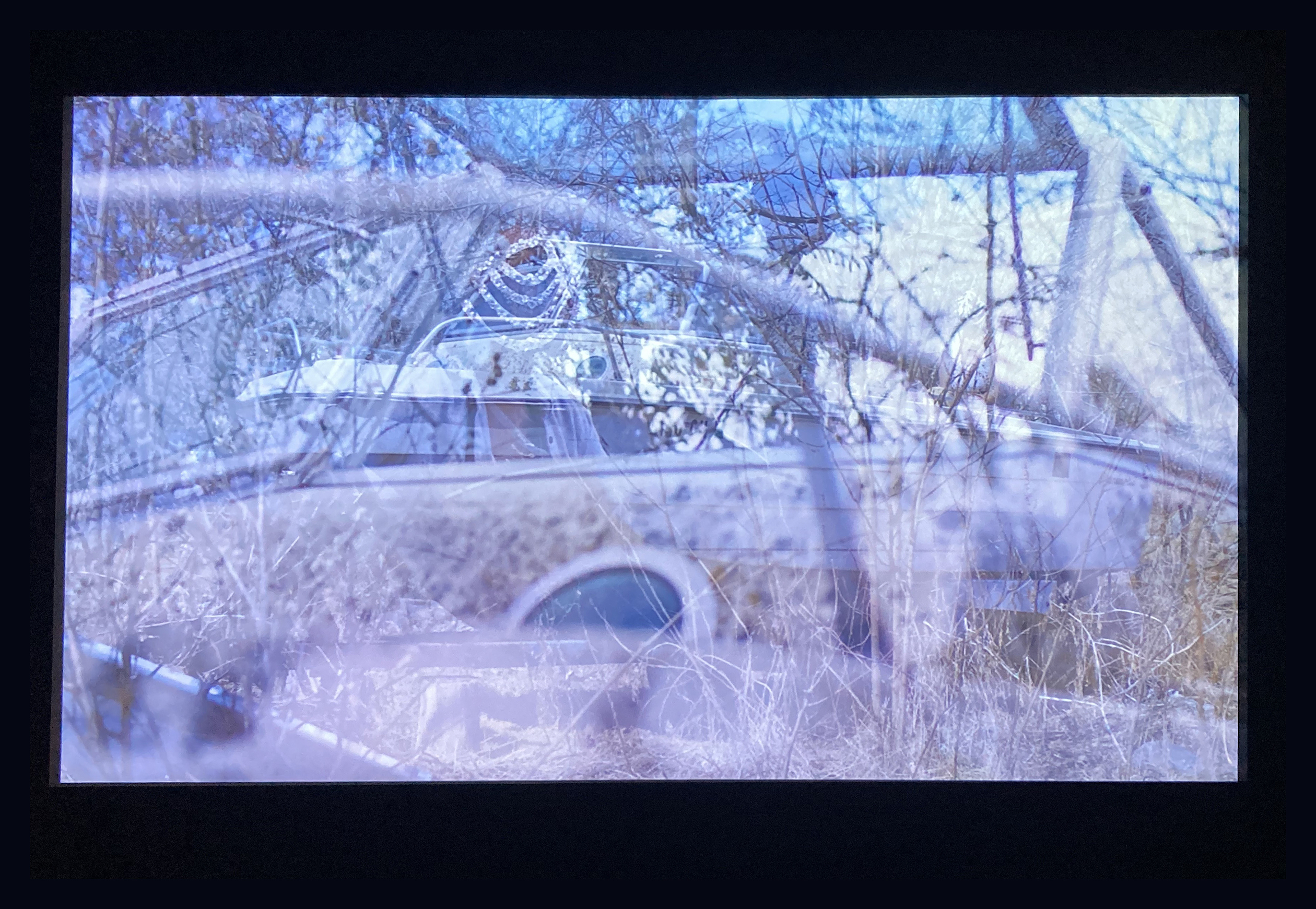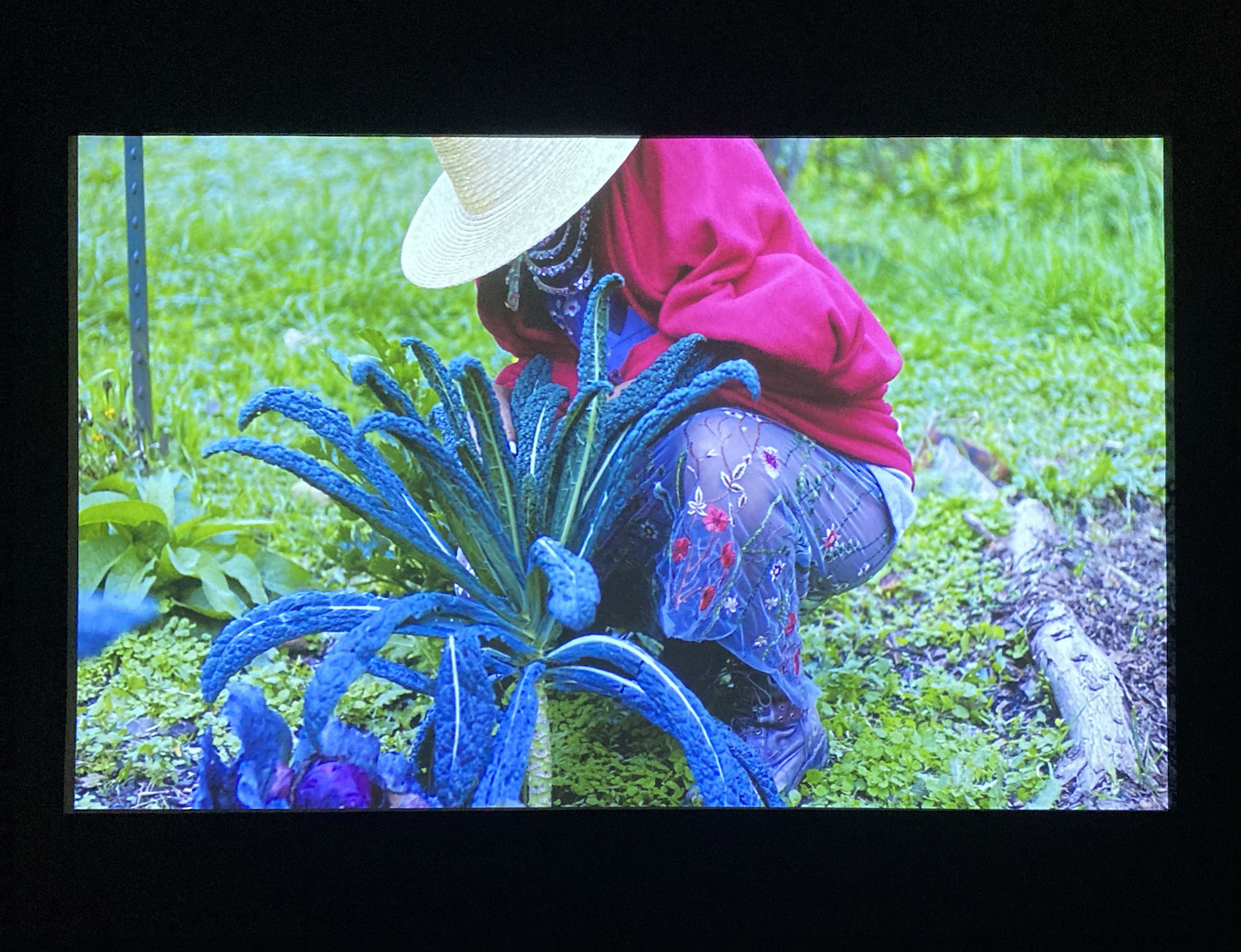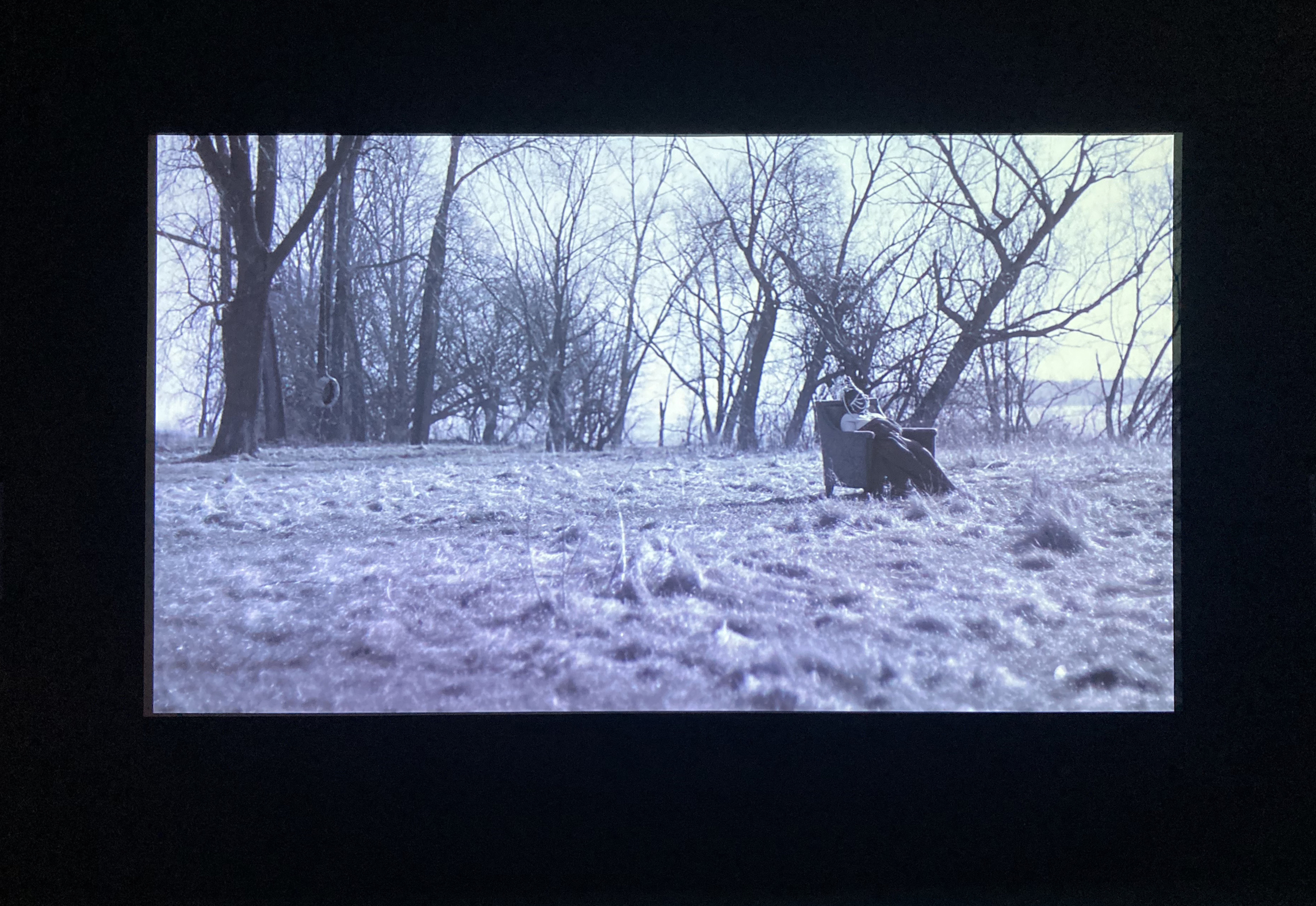Jennifer Harge comes together with Devin Drake to present a clearing, a 13-minute film that was created as part of the five-chapter series called FLY|DROWN. This collection of films is a multiform project involving performance, film and installation. The artists’ consideration for context sets the stage as the chapters of the series are screened within installations that resemble a post-Great Migration home in Detroit. Harge is an artist, a teacher of dance and a 2017 Kresge Arts in Detroit recipient who is recognized for her focus on Black feminist thought, spirit work and folklore. The long-time collaboration between Jennifer Harge and Devin Drake has culminated in this project that plays a part in the larger conversation concerning ongoing erasure of tribal histories and our contemporary relationships with nature and time. The film a clearing is a fable. Its exhibition text acts as a forenote that engages us like a story-teller introducing their tale. This text provides stepping stones to navigate the abstract waters of the film, linking it to previous works by Harge, and highlighting her ongoing investigations into the capabilities of our imaginations and what it means to construct and occupy dreamscapes. We learn about the film’s main character, elder, and her challenges with shame. We also learn about nyeusi and her role as elder’s disembodied spiritual guide. This story of supernatural communication has the potential to evoke discussions surrounding mental health, spiritual health and the daydream as a necessary component in the process of healing.

All images are stills from a clearing., 2023, photo: Ashley Cook
The darkened room in the Museum of Contemporary Art Detroit encompasses four gold cushioned chairs on the right side, placed as if they are gazing up at the film projected on the left wall. This decorative seating possesses an animistic quality, imbued with an adoration for the moving images and the story they are about to tell. The chairs invite you to relax and comfortably enter the dreamscape of elder. Opening with a shuffling of an 8mm film, scenes of the skyline, an old telephone, an ice cream truck and inner-city nature transition to elder’s unnaturally accelerated and mechanical body movements. She arrives as an embodiment of restlessness and anxiety, showing vulnerability through a presentation of fear and pain. She then re-arrives as a dreamer. In a chair that mirrors those mentioned above, elder lands, sleeping. Viewers of the film take the journey with elder. Our simultaneous experience becomes activated and sustained through a delicate weaving of abstraction and familiarity. Mystical humming sounds overlay birdsong and waves on a beach, and transparencies dance around each other, entering and exiting the frame at varying intervals as we sit in the same chair as she does. Our hearing, sight and touch are activated to not only tell us the story but to mentally and physically transport us into it ourselves.

a clearing., 2023, photo: Ashley Cook
The sudden arrival to this dream-space, where time is limitless and pacing is personal, emphasizes the stark contrast between her waking life and her dream. The chaos that is illustrated through dark lighting and rapid motion shifts to natural lighting and a slowed-down pace. The visualization of a place to comfortably exist is a common practice for artists. It is a way to take into account our current situation and produce alternative solutions in order to impact the future. While her observation of the world from an abandoned boat in the middle of a field hints at surrealist compositional techniques, her white mask and architectural headdress alludes to afro-futurism. Both creative movements actively work to bring things together in unexpected ways to challenge the norms and expand the boundaries of what is possible. Relative to the fast pace world that we live in today, another aspect of the film that feels quite unreal is the ease at which time passes. In her dream, elder is allowed to be unhurried in her gentle exploration. Jennifer Harge’s appreciation for relational ecosystems is visually communicated through elder’s curiosity and admiration for this world around her. With permission to be in reverie, elder plays with a tiny ladybug, embraces a large rock on the beach, wades in the water, and writes in the sand. She pulls pedals and leaves from a tulip and submits it to the tide. Her interaction with these things is serenely empathic, her choices seem symbolic and mystical and the barrier between her and everything else seems thin.

a clearing., 2023, photo: Ashley Cook
The distinct emphasis on pacing is established in the exhibition text accessible at the entrance of the dimmed room, and is reiterated through the natural repetitions found in the film. Wave after wave hits the shore, birds repeat their call, wind faintly shakes the brim of her hat, seasons change. As a continuation of the FLY|DROWN series, we are encouraged to think about pacing as a practice that allows us to take the time we need, listen to our bodies, our minds and the land. A verbal and written narration concludes the short film with an introduction to a fictional tribe called the “air people”. This final commentary establishes their connection to the true legendary people of Igbo Landing1 who, like the people of the Great Migration, made extreme sacrifices on their journey to achieve self-sovereignty.

a clearing., 2023, photo: Ashley Cook
The FLY|DROWN series was created over the span of six years with the first chapter being premiered at Detroit Artists Market in 2019. Subsequent chapters premiered as part of larger exhibitions and festivals at institutions including the Wexner Center for Arts, Sidewalk Detroit and the University of Iowa.
The film a clearing, at the Museum of Contemporary Art Detroit is supported by the John S and James L. Knight Foundation. The film opened on April 14, 2023, and is on view until September 3, 2023 https://mocadetroit.org/a-clearing/
1 Igbo Landing at Dunbar Creek on St. Simons Island in Georgia, USA, is a historic site that marks the location of the largest mass suicide of enslaved people. In 1803, captives from Igbo (now Nigeria) rebelled against their captives, taking control of the ship and drowning them before marching into the water themselves, choosing death over slavery. Samuel Momodu, “Igbo Landing Mass Suicide (1803),” January 9, 2023,
https://www.blackpast.org/african-american-history/events-african-american-history/igbo-landing-mass-suicide-1803/.
